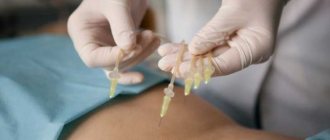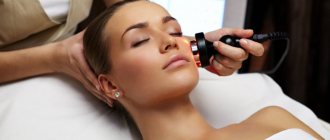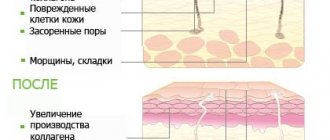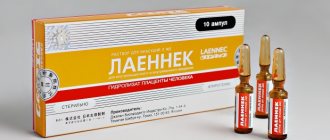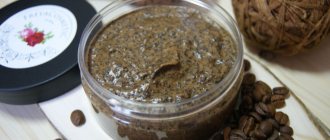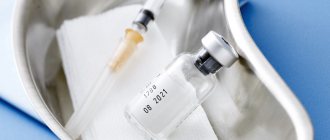Ultrasound (US)
– mechanical vibrations of an elastic medium, inaudible to the human ear, the frequency of which exceeds 20 kHz.
The piezoelectric effect, due to which ultrasonic vibrations arise, was discovered by French physicists, the Curie brothers, in 1881. For a long time, ultrasound
has been used in various industries - from metallurgy to military developments.
Ultrasound
initially used in veterinary medicine to determine subcutaneous fat in pigs.
First attempt at ultrasound
human body took place only in 1942.
It was then that it became possible to obtain a full-fledged image of human internal organs and tissues. Ultrasound
in medicine for quite a long time - until 1937, when the method of one-dimensional echoencephalography
(neurosonography)
.
From that moment on, ultrasound
began to be used more widely not only in diagnosis, but also for the treatment of various types of diseases.
At the end of 1938, R. Pohlman performed ultrasound treatment
and obtained good results for sciatica, neuralgia and myalgia.
Features of phonophoresis
Phonophoresis
– a combined effect on the body
of ultrasound
and a medicinal substance applied to the skin or mucous membranes.
The basis for the development and implementation of the method in clinical practice was primarily information about the ability of ultrasound
to loosen connective tissue, increase the permeability of the skin and histohematic barriers, increase diffusion and potentiate the effect of medicinal substances (DS), as well as enhance transcapillary transport of liquids and substances soluble in them.
During the procedure, the medicinal substance is included in the contact medium. When sonicated, the medicinal substance retains its structure and pharmacotherapeutic activity, its action is unidirectional with the action of ultrasound
, which ensures a synergistic effect on the body.
The introduction of a medicinal substance into the body during phonophoresis
is carried out through the excretory ducts of the sweat and sebaceous glands, transcellular and intercellular routes.
Ultrasonic vibration frequency for phonophoresis
is of particular importance: the lower the
ultrasound
, the greater the quantity of the drug entering the body. The ability of tissues to absorb ultrasonic vibrations is also important - acoustics. Border tissues (for example, skin and subcutaneous tissue) have the best acoustic ability.
Methodology of the procedure
Phonophoresis does not require preparation. Stages of the procedure:
- Treating the skin with an antiseptic and applying a medicinal composition.
- Impact on the area with the device. The device is moved along the surface or at a distance of 1–2 cm. The speed of movement of the emitter is 1–2 cm/s.
- During the process, you can change the power - this improves the penetration of substances inside.
The course of treatment is 10–15 procedures, 3–15 minutes each. After phonophoresis, the increased sensitivity of tissues persists for 2–3 hours, so it is advisable not to wash off the applied substance or wipe it off with a napkin.
Article on the topic: Metrogyl denta gel - reviews and instructions for use
Benefits of phonophoresis
- Ultrasound therapy
actively saturates tissues with oxygen, increases the elasticity of connective tissues, rejuvenates and regenerates cells, increases tissue turgor, tones muscles, provides microheating and tissue massage, creating a lifting effect. - The drug injected under the skin acts for a long time after the procedure.
- With the help of phonophoresis,
you can quite effectively reduce swelling, increase blood circulation, remove metabolic products from cells, and improve lymphatic drainage.
Types and characteristics of devices
The beauty market today offers a large selection of ultrasound devices with which you can perform facial phonophoresis at home. Let's look at just a few of them.
Device AV-009 from the Avicenna Medical Scientific Association: power - 0.4 W/cm², operating temperature range - from +10 to +35°C, weight - 0.4 kg. Possibilities: lifting of the face, neck, décolleté, lipolysis (destruction of the fat layer in problem areas), sonoderma (lymphatic drainage, deep effect on the fibers of the epidermis), adjustable phonophoresis. Cost: 2550 rubles.
Bio Sonic 2000 device from the French manufacturer Gezatone: frequency - 24 kHz, power - 0.8 W/cm², operating temperature range - from +10 to +35°C, weight - 300 g (without power adapter). Features: massage and ultrasonic cleaning. Cost: 6641 rubles.
Portable therapeutic device UZT S2 from the Chinese manufacturer Silver Fox: operating frequency - 1 MHz, power - no more than 0.3 W/cm², operating temperature range - from +15 to +35°C, weight - 185 g. Capabilities: ultraphonophoresis, ultrasonic massage , prevention of cellulite in problem areas. Cost - 2800 rubles.
Indications for phonophoresis
Indications for phonophoresis
determined by the pharmacotherapeutic properties of medicinal substances and indications for the use of ultrasound.
The most common of phonophoresis
are:
- for diseases and injuries of joints;
- for diseases of the peripheral nervous system;
- for osteochondrosis of the spine with neurological manifestations;
- for sports injuries;
- for eye diseases;
- for vascular diseases;
- in dermatology;
- in postoperative rehabilitation of patients, etc.
Preparation for the procedure
More recently, ultrasound has begun to be used at home. Phonophoresis is a method of cleansing and renewing the skin, which our women have already loved. In order for it to bring maximum results, you need to properly prepare for the procedure. And for this you need:
- Use your usual products (micellar water, milk, gel, soap) to remove makeup.
- Rinse your face with warm water to remove any remaining cleansing products.
- Using a scrub, remove the dead top layer of the epidermis.
- Dry the skin lightly with a towel.
- Prepare a steam bath with the addition of medicinal herbs that help relieve irritation (chamomile, calendula, sage, birch leaves and buds, linden flowers, etc.). Hold your face over it for 5-7 minutes.
Phonophoresis at GUTA CLINIC
Phonophoresis in Moscow
today they are carried out not only by various medical institutions, but also by beauty salons, where the procedure is often carried out in violation of sanitary standards by uncertified specialists who do not have sufficient qualifications to carry out the procedure.
We do not urge you to give up going to beauty salons completely, we simply remind you that phonophoresis
is primarily a medical procedure, which is best done by an experienced physiotherapist. Otherwise, not only is a sufficient therapeutic effect not guaranteed, but negative consequences of such exposure, for example, an allergic reaction to the drug used, cannot be excluded.
Only a competent specialist, having familiarized himself with the results of your examination and having sufficiently complete information about your health, will help you select and conduct for you the necessary course of phonophoresis
in accordance with all requirements imposed by the Ministry of Health of the Russian Federation.
GUTA CLINIC employs highly qualified specialists with extensive experience in the successful use of phonophoresis
in the treatment of a wide range of different diseases.
Sign up for phonophoresis now, and tomorrow your family and friends will note how you have changed and become prettier!
Contraindications
- Pregnancy.
- The presence of ARVI and influenza.
- Inflammation of the branches of the trigeminal nerve.
- Inflammatory and infectious skin diseases.
- Presence of wounds, abrasions, scratches, burns.
- Diseases of the cardiovascular system, heart rhythm disturbances, high blood pressure.
- Psycho-emotional instability.
- Blood diseases.
- The presence of electronic implants, pacemakers, metal structures in the bones.
- Oncological diseases.
In these cases, phonophoresis cannot be used. Contraindications should also apply to people prone to allergies. Injected drugs can cause rash, irritation, and even choking.
Phonophoresis: indications and contraindications, effectiveness
Recently, various physiotherapeutic procedures, including phonophoresis, have become especially popular.
What is its peculiarity? What effect does it have on the body? Who will benefit from the procedure? Are there any contraindications to its implementation? Possible side effect?
Phonophoresis is called ultrasonic treatment of the skin, during which medications are injected into damaged areas of the body. The most commonly used are hydrocortisone, analgin, heparin, and Traumeel. The use of ultrasound ensures rapid penetration of drugs deep into tissues, which increases the effectiveness of their action.
Phonophoresis for joints
As many people age, they have to deal with diseases of the musculoskeletal system. Phonophoresis with hydrocortisone ointment for diseases of the spine, shoulder or knee joints is a method of physiotherapeutic treatment that helps to quickly return to normal life.
Phonophoresis with hydrocortisone has an anti-inflammatory effect and stimulates blood flow. Connective structures are loosened and healing processes are activated. The production of collagen fibers is also stimulated. In this case, the patient does not need to take pills, which will spread throughout the body and only lastly reach the affected area.
Medicines for phonophoresis
Photo source: shutterstock.com
The main medications used in phonophoresis:
- Analgin (50% solution);
- Heparin ointment or aqueous solution of heparin;
- Anesthetic ointment;
- Baralgin (2-2.5 ml of ampoule solution rubbed into the skin and coated with glycerin);
- Ganglerone ointment based on lanolin and petroleum jelly;
- Contractubex in the form of a gel;
- Lidase and collagenase solution;
- Hyaluronic acid (gel containing 0.2-0.5% sodium hyaluronate);
- 10 percent methyluracil ointment;
- Interferon in the form of a solution;
- Troxevasin (2 percent gel or troxevasin ointment);
- Gel Fermenkol and Dermatix;
- Ointments Chondroxide and Karipain (Karipazim):
- Diclofenac;
- Calcium chloride.
Effect on the body
Various drugs use ultrasonic waves to more easily penetrate biological tissues by increasing their permeability and enhancing the transport of liquids in capillaries. Under the influence of ultrasound, the molecules of the injected substances become more mobile and their reactivity increases. At the same time, a larger amount of the drug enters the body, as a result of which its effectiveness increases. Ultrasound can also reduce the side effects of drugs. Medicinal substances that are dissolved in an aqueous medium have the highest activity in an ultrasonic field. The injected substances enter the blood within an hour, reaching a maximum concentration within 12 hours. As the duration of exposure and its intensity increase, the amount of the drug needed by the body increases.
Ultrasound potentiates (strengthens) the effect of antimicrobial, vasodilating, immune system suppressing, and anti-inflammatory drugs. However, it should be remembered that it reduces the activity of morphine, B vitamins, atropine, novocaine, etc.
The effectiveness of ultraphonophoresis
The procedure improves blood microcirculation, lymph outflow, and metabolism. Regeneration processes in cells are actively stimulated, and the functioning of the sebaceous glands returns to normal. After completing a course of procedures, a lifting effect is observed, skin turgor is strengthened, and acne disappears. The technique is painless, does not require a rehabilitation period, and there are no side effects.
The ultraphonophoresis method is successfully combined with other cosmetic procedures. According to reviews of people who have completed the course of sessions, the high effectiveness of the method is confirmed. Most of the result depends on the qualifications of the cosmetologist and the drugs used.
What formulations can be used?
In addition to hyaluronic acid, gels based on vitamin E, bee jelly, as well as extracts of various medicinal plants, collagen, chitosan, and placenta extract are used for ultraphonophoresis.
If the patient’s main problem is scars, formulations with trypsin and lidase are used. To combat acne and excess oil, gels with aloe vera, chamomile, zinc, and sulfur are used - they have an antiseptic, anti-inflammatory, and drying effect.
If necessary, the composition of the administered drugs can be changed during the course - this way you can cope with a whole range of problems.
You can find out the cost and sign up for ultraphonophoresis at our clinic in Moscow by phone. Our center employs experienced cosmetologists who are proficient in the most advanced hardware techniques. We will help you cope with any aesthetic problem, restore the elasticity, smoothness and youth of your skin.
Cosmetics for phonophoresis
The effectiveness of the procedure depends on the cosmetics used.
Drugs for administration via ultrasound are selected depending on the expected result:
- moisturizing and restoring gel - gives elasticity to capillary walls, stimulates collagen synthesis in connective tissue, contains vitamins (retinol, tocopherol, biotin), natural oils, green tea extract;
- strengthening gel - has a strengthening effect on fragile capillaries, improves skin tone;
- gel for problem skin - has anti-inflammatory and antibacterial effects, contains zinc, sulfur and chamomile extract.



